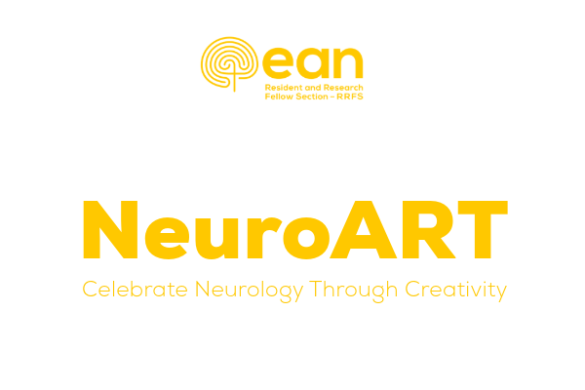by Viktoria Papp
Each month the EANpages editorial team reviews the scientific press for recently published papers of outstanding interest to neurologists. Below we present our selection for December 2023 (for our Paper of the Month for December, see here).
1. Physical activity and exercise for the prevention and management of mild cognitive impairment and dementia: a collaborative international guideline
This is the first guideline aiming to provide recommendations on physical activity and exercise as a preventive and symptomatic treatment of mild cognitive impairment (MCI) and dementia based on published literature and expert consensus, and involving international scientific and patient representatives’ societies. This guideline is also endorsed by the European Academy of Neurology. The number of people with dementia is increasing worldwide and as no disease modification treatment is currently available there is an urgent need to act on modifiable targets. A growing amount of literature shows the importance of physical activity and exercise for preventing and slowing down dementia-related problems; however, the scientific evidence is inconclusive. Publications were searched in several databases (MEDLINE, Embase, The Cochrane Library, Epistemonikos) until 9 October 2021. Studies were selected by using COVIDENCE in a two-step approach. The study group concluded (1) that physical activity may be considered for primary prevention for cognitive decline in people without any evidence of dementia or MCI; (2) the effect of physical activity and exercise on slowing the conversion from MCI to dementia is still uncertain in people with MCI; and (3) physical activity/exercise in people with moderate dementia could maintain cognition while exercise may stabilise disability.
2. Trial of Botulinum Toxin for Isolated or Essential Head Tremor
This multicentre, double-blind, randomised, placebo-controlled (1:1 ratio) trial investigated the effect of botulinum toxin in adult patients with essential or isolated head tremor. Botulinum toxin has already been used to treat essential tremors, but data on the effect and safety were limited. Treatment was administered in weeks 6 and 12 while patients were assessed every 6 weeks until week 24. Improvement in the tremor was graded on the Clinical Global Impression of Change (CGI) scale. The primary outcome was evaluated at week 18 as an improvement by at least 2 points on the CGI scale. The secondary outcomes were improvement by at least 2 points on the CGI scale during weeks 6, 12, and 24, and treatment effect assessed by two self-administered questionnaires. There were 117 patients randomised to either the botulinum toxin (62 patients) or placebo (55 patients) treated group. Improvement by at least 2 points on the CGI scale at week 18 was seen in 31% of the botulinum toxin treated group and 9% in the placebo group (relative risk, 3.37; 95% confidence interval [CI], 1.35 to 8.42; P=0.009). The secondary outcomes showed supportive results where differences between the botulinum toxin and placebo groups were generally sustained during the follow-up time points but not at week 24 when the effect of botulinum toxin was expected to have waned. Side effects occurred more frequently in the botulinum toxin treated group (47% vs. 16%, p<0.001) including headache/neck pain, cervical weakness, and dysphagia.
3. Eplontersen for Hereditary Transthyretin Amyloidosis with Polyneuropathy
This phase 3, open-label, single-group trial included 168 adult patients with hereditary amyloidogenic transthyretin amyloidosis (ATTRv) polyneuropathy from 15 countries and 60 historical placebo patients from a previous trial and followed-up to 65/66 weeks. The aim of the study was to evaluate the effect of subcutaneous eplontersen on the reduction of serum transthyretin and the symptoms of polyneuropathy. ATTRv amyloidosis is a life-threatening autosomal dominant condition caused by a mutation in TTR gene coding transthyretin (TTR) protein. Eplontersen is an antisense oligonucleotide conjugated to a triantennary N-acetyl galactosamine (GalNAc), the main source of circulating transthyretin protein, in order to increase its uptake by hepatocytes. The primary outcome revealed significant adjusted mean percentage reduction in serum transthyretin in the eplontersen group compared to the placebo (difference, −70.4% [95% CI, −75.2% to −65.7%]; P < .001). The secondary outcomes regarding neuropathy impairment and better quality of life showed that all secondary efficacy end points, differences between eplontersen and placebo, were statistically significant.
4. Effect of blood pressure-lowering agents on microvascular function in people with small vessel diseases (TREAT-SVDs): a multicentre, open-label, randomised, crossover trial
This multicentre (five European centres), open-label, randomised crossover trial included adults with symptomatic small vessel disease with an indication for antihypertensive treatment, and either sporadic small vessel disease or CADASIL. The endpoint assessment was blinded. Seventy-five patients were randomised (1:1:1) among three different sequences of antihypertensive management including amlodipine, losartan, and atenolol. The goal of the study was to evaluate the effect of different antihypertensive drug classes on the microvascular function in patients with small vessel disease. The primary outcome was the change in cerebrovascular reactivity (CVR) evaluated by blood oxygen level-dependent MRI response to hypercapnia in the normal-appearing white matter at the end of each treatment period. Efficacy was determined as intention-to-treat principles in participants who had at least one assessment for the primary outcome. Change in CVR did not differ between the different types of antihypertensive medication in participants with sporadic small vessel disease but differed when the analyses were done separately for CADASIL patients. In participants with CADASIL, CVR improved with both amlodipine and losartan treatment compared with atenolol.











